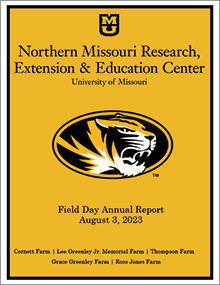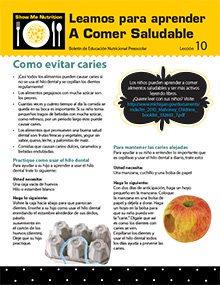

Aprendiendo Nutrición con el Chef — Boletín de educación nutricional para niños en preescolar — Lección 10 (Paquete de 25)
Revised $12
Nota del editor
Esta publicación fue creada para que usted imprima y distribuya de manera gratuita. Si va a duplicar o copiar esta publicación, por favor, complete el formulario de permiso que se encuentra al lado izquierdo de esta página. Si va a compartir o publicar, por favor utilice el enlace directo a esta página.

Aprendiendo Nutrición con el Chef — Boletín de educación nutricional para niños en cuarto grado — Lección 2 (Paquete de 25)
Revised $12
Nota del editor
Esta publicación fue creada para que usted imprima y distribuya de manera gratuita. Si va a duplicar o copiar esta publicación, por favor, complete el formulario de permiso que se encuentra al lado izquierdo de esta página. Si va a compartir o publicar, por favor utilice el enlace directo a esta página.

Aprendiendo Nutrición con el Chef — Boletín de educación nutricional para niños en el kínder — Lección 8 (Paquete de 25)
Revised $12
Nota del editor
Esta publicación fue creada para que usted imprima y distribuya de manera gratuita. Si va a duplicar o copiar esta publicación, por favor, complete el formulario de permiso que se encuentra al lado izquierdo de esta página. Si va a compartir o publicar, por favor utilice el enlace directo a esta página.
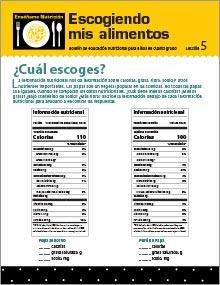
Aprendiendo Nutrición con el Chef — Boletín de educación nutricional para niños en cuarto grado — Lección 5 (Paquete de 25)
Revised $12
Nota del editor
Esta publicación fue creada para que usted imprima y distribuya de manera gratuita. Si va a duplicar o copiar esta publicación, por favor, complete el formulario de permiso que se encuentra al lado izquierdo de esta página. Si va a compartir o publicar, por favor utilice el enlace directo a esta página.
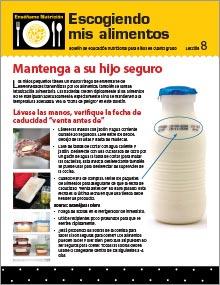
Aprendiendo Nutrición con el Chef — Boletín de educación nutricional para niños en cuarto grado — Lección 8 (Paquete de 25)
Revised $12
Nota del editor
Esta publicación fue creada para que usted imprima y distribuya de manera gratuita. Si va a duplicar o copiar esta publicación, por favor, complete el formulario de permiso que se encuentra al lado izquierdo de esta página. Si va a compartir o publicar, por favor utilice el enlace directo a esta página.

Solutions for Better Living | Cooking Fourth Edition
Revised
Healthy cooking and eating is important to everyone's health and wellbeing. This magazine covers various health and nutrition topics with an emphasis on healthy cooking. Topics include food safety, savvy shopping and cooking with kids. This magazine offers fun, colorful and easy-to-read stories, tips and tricks on stretching your food budget, selecting and preparing in-season fruits and vegetables, how to avoid foodborne illnesses and much more.

Basics of Farm Lease Agreements
Revised
Learn about key elements necessary for creating quality written farm leases between tenants and landowners.

Aprendiendo Nutrición con el Chef — Boletín de educación nutricional para niños en el kínder — Lección 3 (Paquete de 25)
Revised $12
Nota del editor
Esta publicación fue creada para que usted imprima y distribuya de manera gratuita. Si va a duplicar o copiar esta publicación, por favor, complete el formulario de permiso que se encuentra al lado izquierdo de esta página. Si va a compartir o publicar, por favor utilice el enlace directo a esta página.
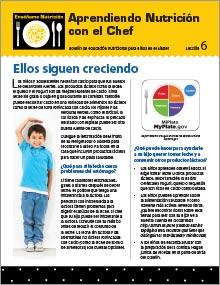
Aprendiendo Nutrición con el Chef — Boletín de educación nutricional para niños en el kínder — Lección 6 (Paquete de 25)
Revised $12
Nota del editor
Esta publicación fue creada para que usted imprima y distribuya de manera gratuita. Si va a duplicar o copiar esta publicación, por favor, complete el formulario de permiso que se encuentra al lado izquierdo de esta página. Si va a compartir o publicar, por favor utilice el enlace directo a esta página.

Aprendiendo Nutrición con el Chef — Boletín de educación nutricional para niños en el kínder — Lección 1 (Paquete de 25)
Revised $12
Nota del editor
Esta publicación fue creada para que usted imprima y distribuya de manera gratuita. Si va a duplicar o copiar esta publicación, por favor, complete el formulario de permiso que se encuentra al lado izquierdo de esta página. Si va a compartir o publicar, por favor utilice el enlace directo a esta página.
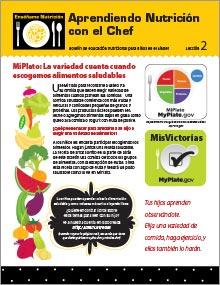
Aprendiendo Nutrición con el Chef — Boletín de educación nutricional para niños en el kínder — Lección 2 (Paquete de 25)
Revised $12
Nota del editor
Esta publicación fue creada para que usted imprima y distribuya de manera gratuita. Si va a duplicar o copiar esta publicación, por favor, complete el formulario de permiso que se encuentra al lado izquierdo de esta página. Si va a compartir o publicar, por favor utilice el enlace directo a esta página.
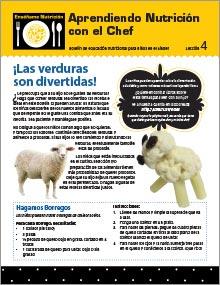
Aprendiendo Nutrición con el Chef — Boletín de educación nutricional para niños en el kínder — Lección 4 (Paquete de 25)
Revised $12
Nota del editor
Esta publicación fue creada para que usted imprima y distribuya de manera gratuita. Si va a duplicar o copiar esta publicación, por favor, complete el formulario de permiso que se encuentra al lado izquierdo de esta página. Si va a compartir o publicar, por favor utilice el enlace directo a esta página.

Kids in the Kitchen
Revised
Kids in the Kitchen encourages young people to eat healthier meals and snacks as a result of hands-on cooking experiences. Youth participants learn to prepare simple, healthy foods they can make for themselves and their family members.

Kids in the Kitchen — Level A
Revised $50
Kids in the Kitchen — Level A encourages 6-9-year-olds to eat healthier meals and snacks as a result of hands-on cooking experiences. Youth participants learn to prepare simple, healthy foods they can make for themselves and their family members.
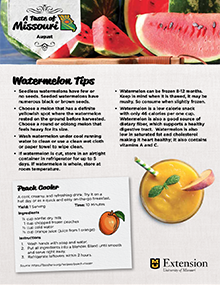
A Taste of Missouri — August — Watermelon
New $3.25
Easy-to-prepare recipes and tips for using watermelon are displayed in this eight-page flier. Additional seasonal recipes, ingredients, tips, and safety measures are also included.
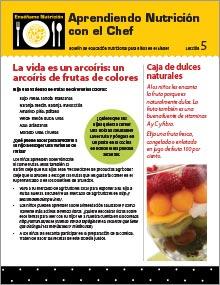
Aprendiendo Nutrición con el Chef — Boletín de educación nutricional para niños en el kínder — Lección 5 (Paquete de 25)
Revised $12
Nota del editor
Esta publicación fue creada para que usted imprima y distribuya de manera gratuita. Si va a duplicar o copiar esta publicación, por favor, complete el formulario de permiso que se encuentra al lado izquierdo de esta página. Si va a compartir o publicar, por favor utilice el enlace directo a esta página.
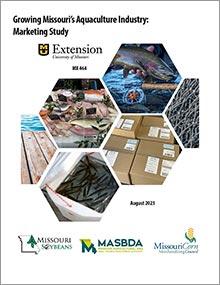
Growing Missouri’s Aquaculture Industry: Marketing Study
New
Reference this market research information as you explore aquaculture production alternatives and develop a plan for selling food fish, bait fish, sport fish or ornamental fish.

WorkWell Missouri Toolkit
Revised
Employers interested in starting, improving or maintaining a staff wellness program: Learn to assess the workplace, identify program types to implement, implement wellness programming and determine effectiveness in this step-by-step MU Extension guide.
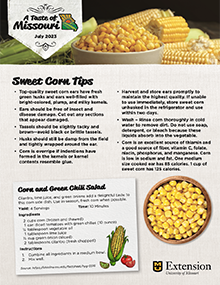
A Taste of Missouri — July — Sweet Corn
New $3.25
Easy-to-prepare recipes and tips for using sweet corn are displayed in this eight-page flier. Additional seasonal recipes, ingredients, tips, and safety measures are also included.

Preserve It Fresh, Preserve It Safe: 2023, No. 4 (July/August)
New
Learn about the possibility of using a ceramic cooktop when canning and how to make mango chutney.
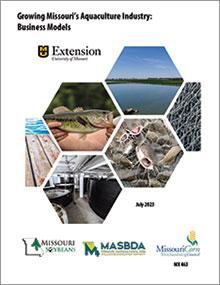
Growing Missouri’s Aquaculture Industry: Business Models
New
Learn about capital investments, production budgets, inputs and net returns for startup Missouri aquaculture operations using pond culture or recirculating aquaculture systems.

Food Safety Tips for Consumers: Meal Delivery Services
New
It’s important to keep food safety in mind when receiving meal deliveries or getting groceries delivered. Foodborne illnesses can occur when food isn’t handled properly. Get tips for keeping food delivered to your home safe in this fact sheet.
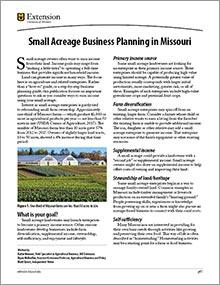
Small Acreage Business Planning in Missouri
New
Learn why business planning around marketing, assets and profitability is important for launching a successful small acreage enterprise. Be sure to envision your goals as you consider enterprises.
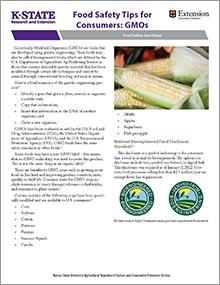
Food Safety Tips for Consumers: GMOs
New
Genetically modified organisms, or GMOs, are foods developed using genetic engineering. Learn some basic information about labeling requirements and food safety in this fact sheet.
